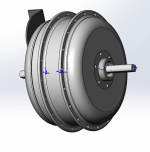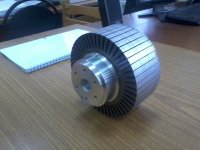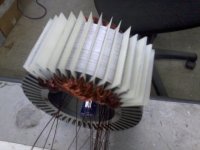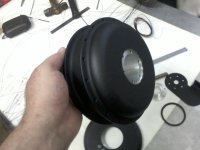anpaza
10 W
- Joined
- Dec 7, 2010
- Messages
- 69
This is a regular synchronous permanent magnet motor... at 4:00 you can see how the magnets are inserted into the rotor splices... and then at 4:15 you can see the splices slightly repulses each other because magnets are inserted into splices with same polarity.Deafcat said:Hey totally! I just watched that video now,
https://www.youtube.com/watch?v=x3brfAEs_RY#t=307
that sure looks like SRM motor...
A SRM motor can't have an absolutely round rotor. The whole idea betwen SRM is that the rotor has a number of salients, which are attracted to fill the respective magnetic gaps when magnetic flux flows in a certain direction through the stator. If the rotor is round, it can't make the flux path energetically more efficient, so it will stay in place.







